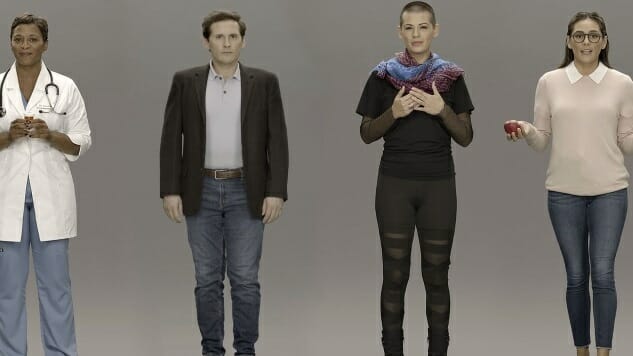Samsung’s Neon “Artificial Humans” Sum Up the Empty Hype of CES
These People Aren't Real. Neither Is the Hype.
Screen capture from the Neon.life site
In the weeks before CES 2020, Samsung’s Neon project had one question: “have you ever met an ‘artificial’?” As devised by the company’s secretive STAR Labs subsidiary, these “artificials” seemed to promise a lifelike AI that was indiscernible from real life. When they were finally unveiled at CES last week, though, they left people asking a different question: is this it?
Neon broke out as the clear leader in CES hype before the show even started last Monday morning. Not only was it promising innovations in a buzzy tech sector, or capitalizing on the secrecy that surrounded STAR Labs (a name that evokes fantastic feats of superheroic science fiction for fans of DC comics and TV shows), but its booth had a prime spot near the main entrance of the show’s Central Hall, guaranteeing that almost everybody at the convention would walk past it at some point. That booth was ringed with portrait-style screens featuring life-size human avatars showing off the kind of service roles that Neon’s artificial humans could one day fill: a park ranger, a travel agent, a flight attendant, a pop star, a stubbled loner in a leather jacket and sunglasses (perfect for if the USA Network ever wants to reboot Renegade without Lorenzo Lamas), and more. It was an eye-catching display that certainly got a lot of attention.
The booth hosted regular presentations by STAR Labs CEO Pranav Mistry, who explained both the goals of Neon and how the tech behind it works. His buzzword-laden speech definitely made the CES crowds excited for this new technology, boasting that the computationally-generated Neons will be able to interact with you not simply as an Alexa-style digital assistant or chatbot, but like a virtual human, even developing emotions, intelligence and a personality through repeated use. STAR Labs didn’t really explain how it’ll work in practice, though, and the CES demos that can be found online (here’s one from CNET) show interactions that are slow, cold, and anything but human. It’s a far cry from the smooth, realistic videos playing on the Neon booth’s screens; as The Verge reports, Samsung and STAR Labs even acknowledge that the “scenarios shown at [their] CES Booth and in [their] promotional content are fictionalized and simulated for illustrative purposes only.”
-

-

-

-

- Curated Home Page Articles By Test Admin October 21, 2025 | 3:10pm
-

- Curated Home Page Articles By Test Admin October 21, 2025 | 2:57pm
- Urls By Test Admin October 21, 2025 | 2:57pm
- Curated Home Page Articles By Test Admin October 21, 2025 | 2:55pm
-

-

-

-

-

-

-

-

-

-

-

-

-

-

-

-

-

-

-

-

-

-

-

-

-

-

-

-

-

-

-




































